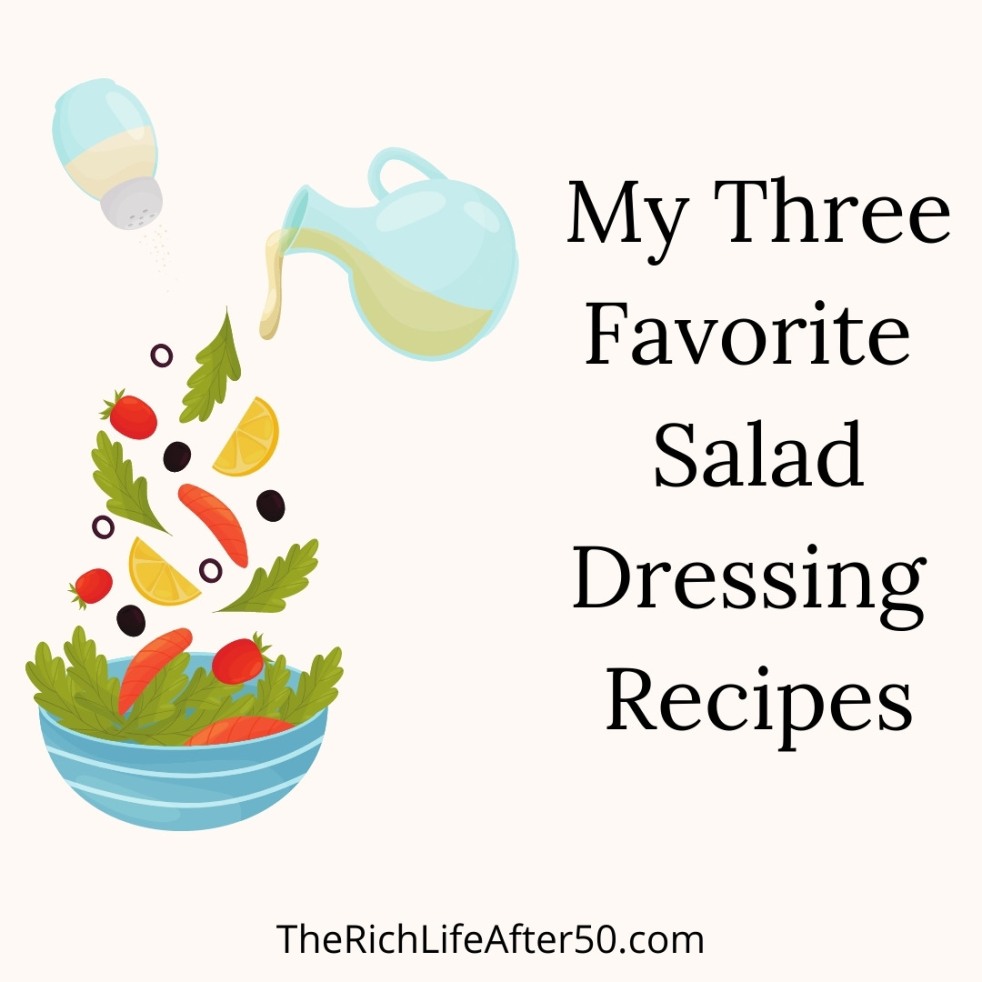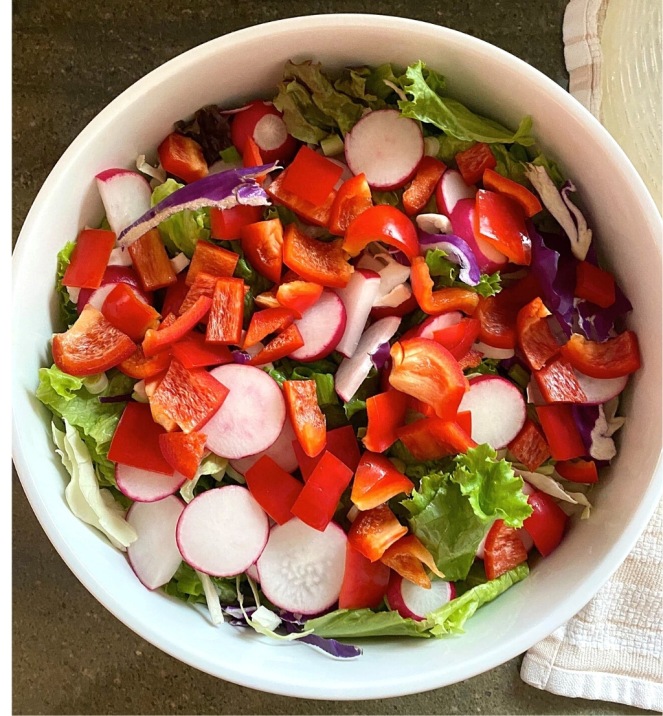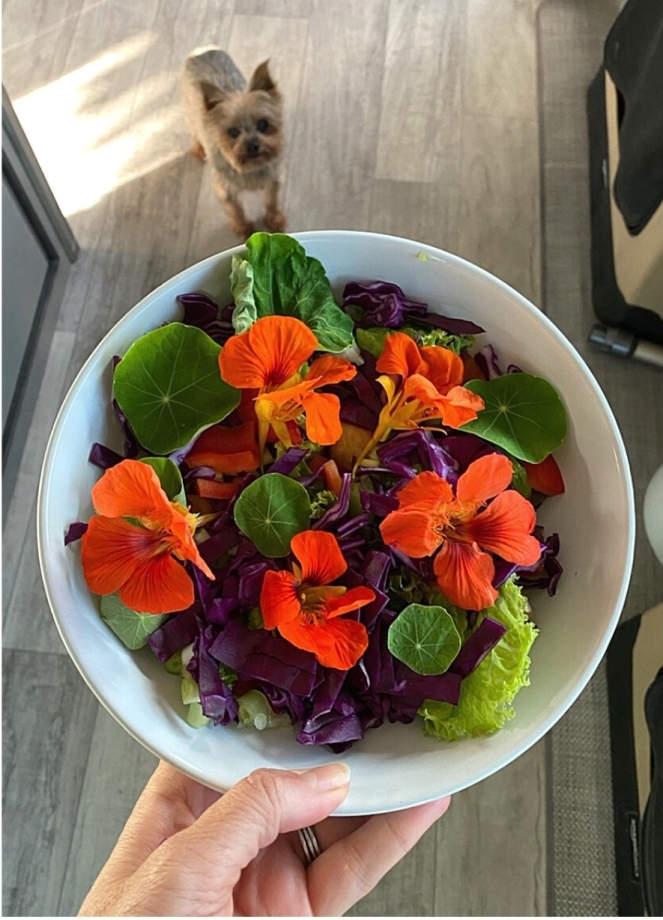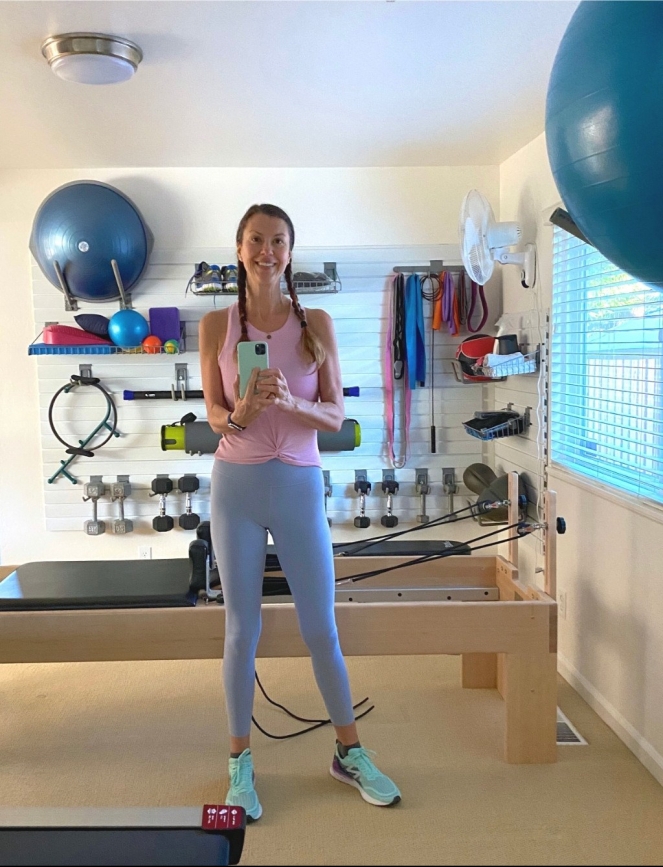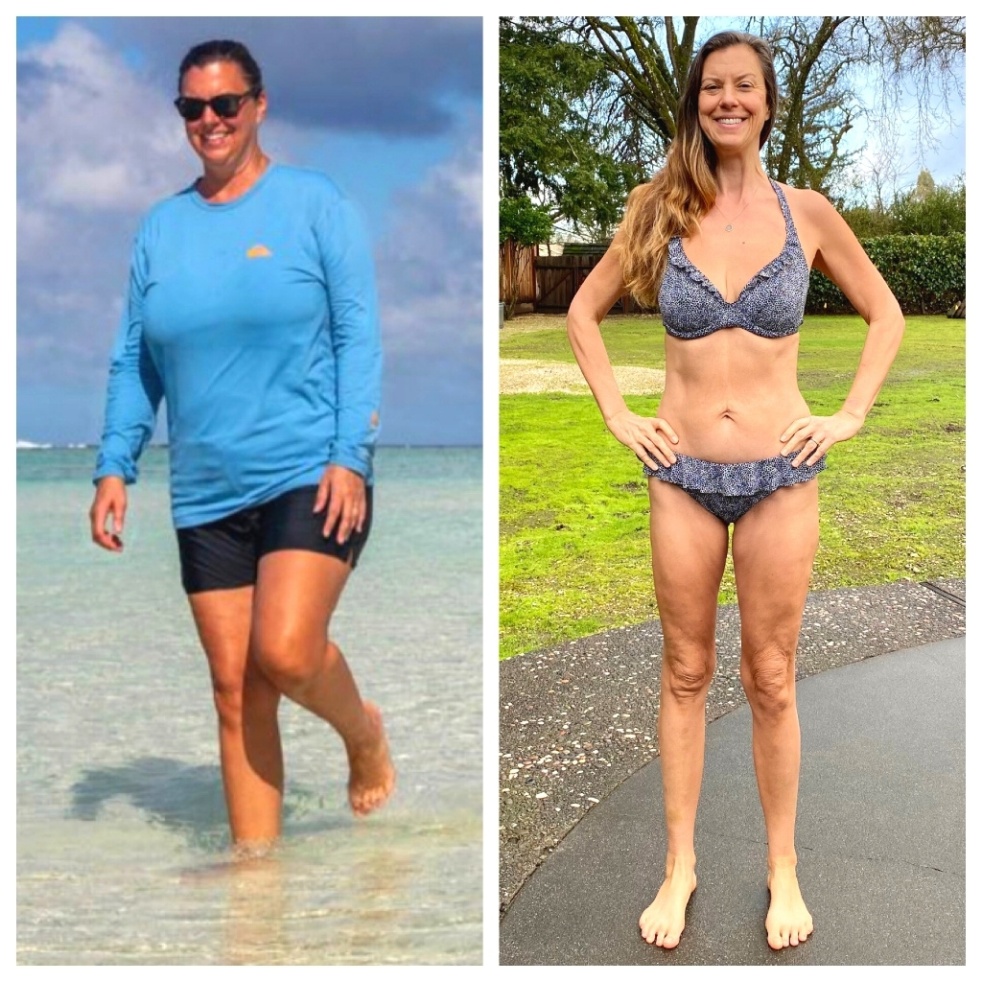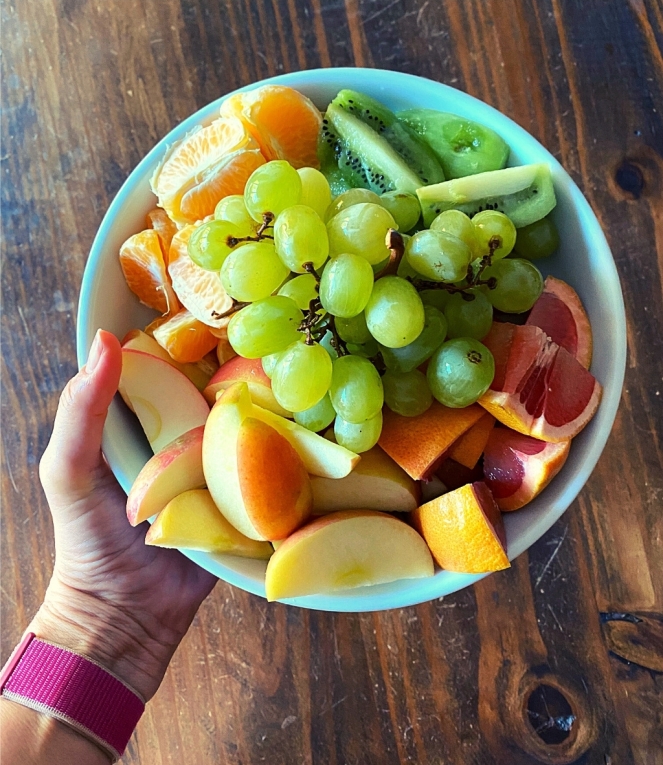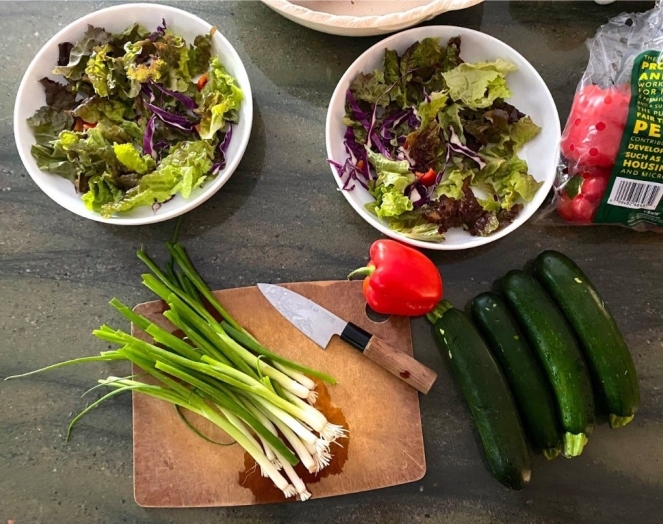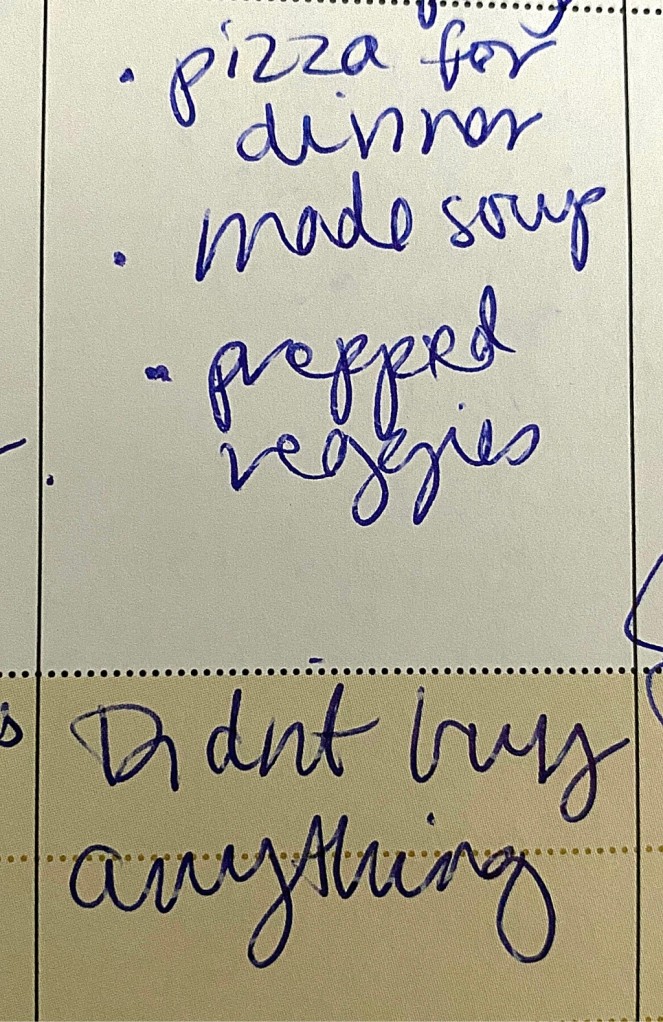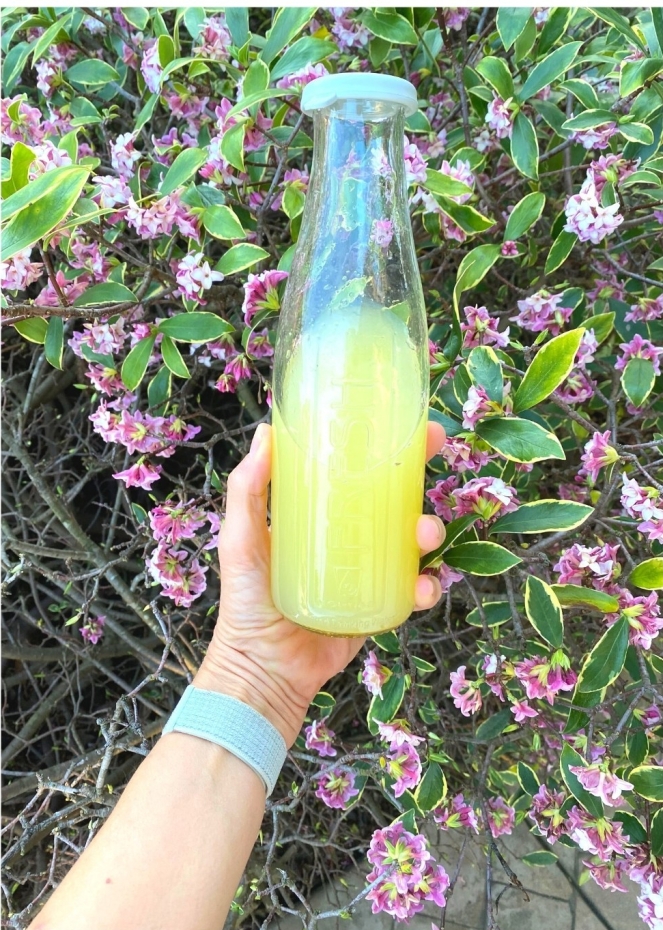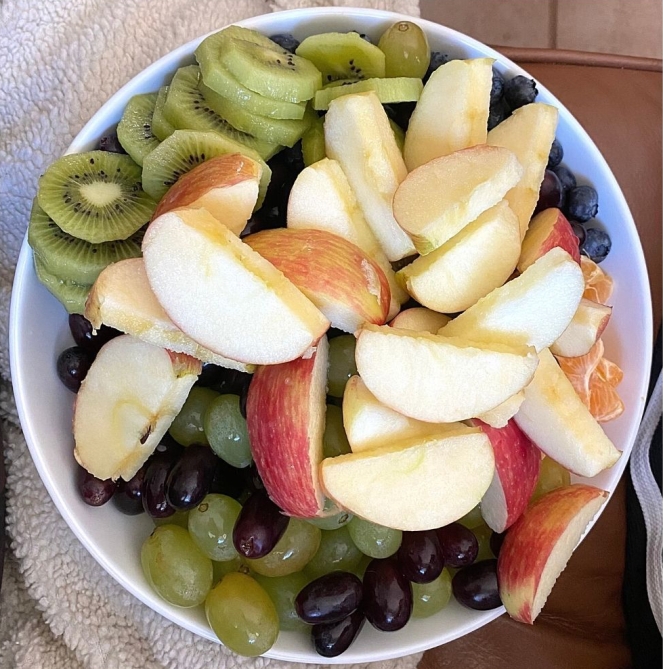Many salad dressings you find at the grocery store are high in calories. And those calories can really add up if you use more than the usual two tablespoon serving on your salad like I do. My every day big green salads need more than that!
Commercially made dressings often contain ingredients that I either have never heard of or don’t know what the heck they are, such as: Guar gum, natamycin, calcium disodium edta, xantham gum, titanium dioxide, disodium guanylate, sodium benzoate and potassium sorbate. I don’t know what any of that stuff actually does but I do know I don’t need it in my diet or my salad dressing.
About 10 years ago, I started making my own salad dressings. Today, I thought I’d share my three favorite recipes that are easy to make, lower in calories than most commercial brands, and are free of hidden sugars, extra sodium and weird chemicals.

First, I’m sharing my own loose recipe for a simple vinaigrette that’s easy to customize to your personal preferences.
Make it Your Way Vinaigrette
Here’s what I use:
Fresh lemon juice
One big shallot or two small and/or 2 to 4 garlic cloves minced
Fresh ground pepper
Sea salt
Dijon mustard – lots of it!
Red or white wine vinegar, or both
Herbs de Provence, Italian or Mediterranean seasoning blend

Truvia, stevia, monk fruit or your preferred sweetener
Good quality olive oil – I go easy, olive oil is good for you but it is high calorie. I use 2 tablespoons.
Balsamic vinegar
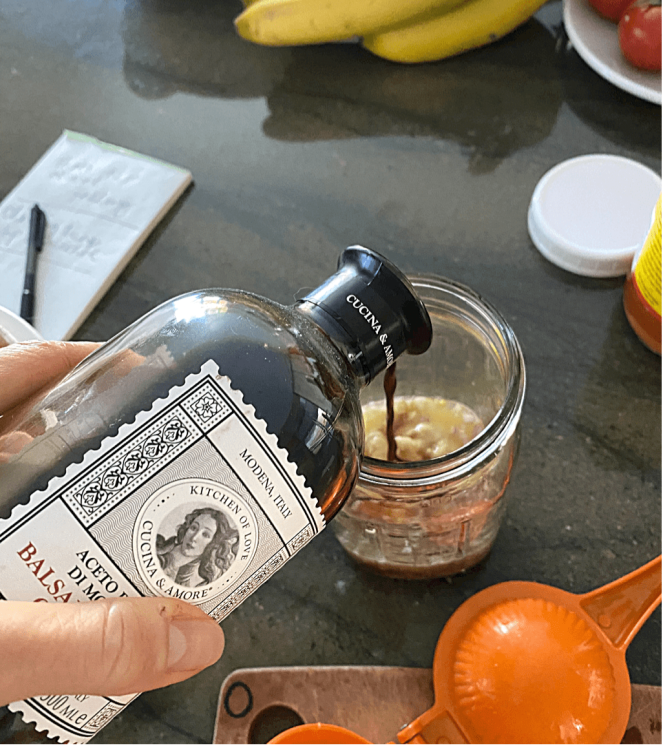
Fruit jam (optional)
Maple syrup (optional)
Honey (optional)
Fresh orange juice (optional)
First I mince the garlic and/or shallots and put them in the jar. If I have both on hand, I use both.
Then I start adding the other ingredients.I begin with small amounts, knowing I can add more later if I want, but I can’t subtract.

To the minced garlic/shallots I add 2 tablespoons Dijon mustard and/or stone ground mustard, a little sweetener (I prefer monk fruit or stevia. Be careful with stevia drops as a little goes a long way!)

A pinch of salt, fresh pepper, dried herbs of your choice, 2 to 4 tablespoons of lemon juice.
1/4 cup of red or white wine vinegar, 3 to 4 tablespoons of balsamic vinegar, and 2 tablespoons olive oil. Stir and then shake until emulsified.
Now taste it. Is it too watery? Add more Dijon mustard. Is it too acidic and harsh? Add more of something sweet, some mustard, and a few tablespoons water.
Sometimes I will add the juice of an orange instead of water for extra flavor. I have also thrown in a heaping spoonful of a sweet jam for thickness and sweetness. I recently used the last of some low sugar jam and made the dressing right in the jam jar.
When you’ve got a vinaigrette that suits your palate, screw the lid on your jar and stick it in the fridge. Since it doesn’t have any dairy products in it, it will keep for quite some time. I usually go through mine, having salads nearly every night, in about a week to 10 days.

As far as a calorie count goes, it will mostly depend on how much olive oil you use. I tried not using any but the consistency was too watery for my liking. I use 2 tablespoons of olive oil and make a big batch of dressing. So I log in my dressing as 40 calories per 1/4 cup. Also be sure to factor in any maple syrup, honey or jam added.
Caesar Salad Dressing
As I discussed in the previous post, eating the same old salad every night can get boring quickly. The same goes for the salad dressing. When you need a change from vinaigrette, have a Caesar salad.
I found this recipe a couple of years ago and like it so much, I printed it out and put it in my old school recipe box. I’ve also committed to memory, I’ve made it so many times.
I always have this dressing on a kale salad – Dino or curly – but Romaine would certainly work (I’m a little wary of Romaine after all the food poisoning outbreaks over the years). It also works great as a sauce for vegetables and I’ve even used it as a spread in a wrap.

Mexican Salad Dressing
My newest find is this Mexican Salad Dressing. I use 3 to 4 garlic cloves and a lot more cumin in my version. When I made this dressing the second time, I forgot to add the olive oil and I didn’t notice a difference. So now I omit that and add a few scoops of salsa instead, either on top of the dressing or mixed in.
My husband and I had chicken tacos the other night and I made a salad to go with them. I added defrosted frozen charred corn and black beans to the salad, then used this dressing to top it off. We had the dressing again a few nights later on tacos – instead of sour cream – and it was delicious!
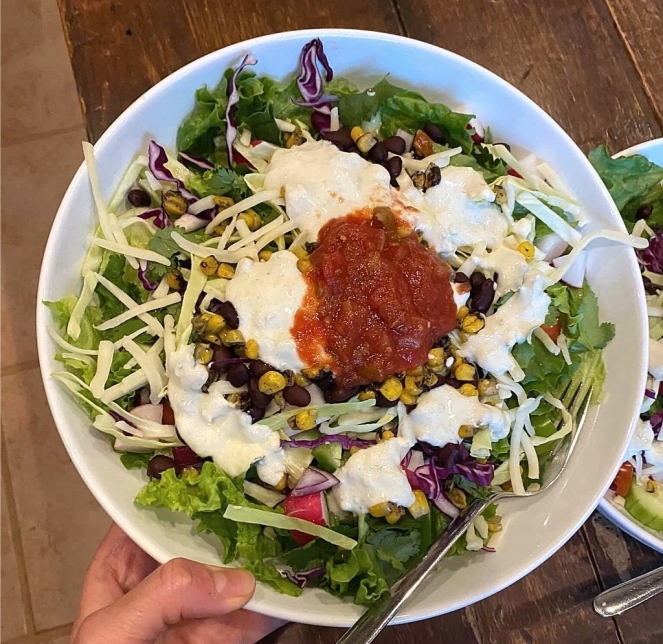
I shared this recipe with a friend who thought the base – yogurt, garlic, lime juice – might translate well into a Ranch style dressing with the right herbs. I want to try that next.
Do you have a low calorie dressing recipe you love? I am always looking for new ones to add to my trio.
Adrienne

